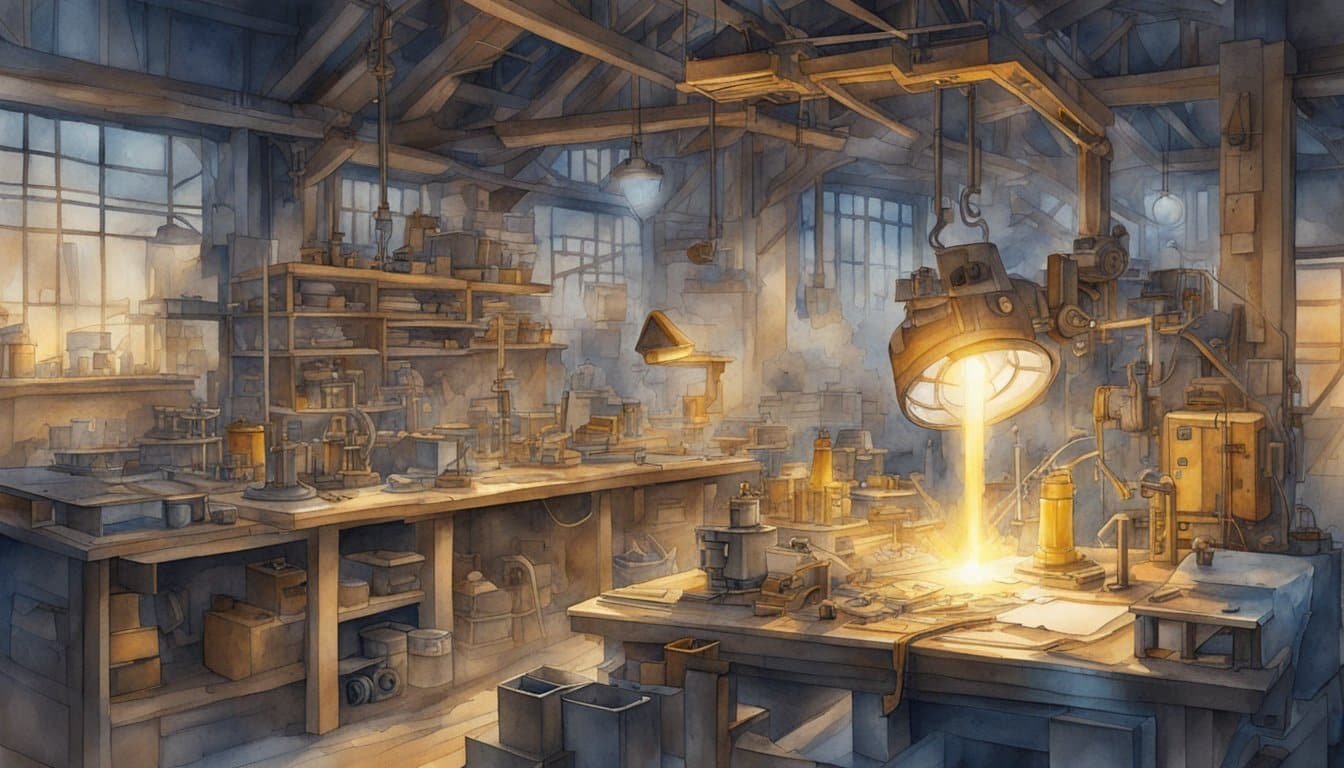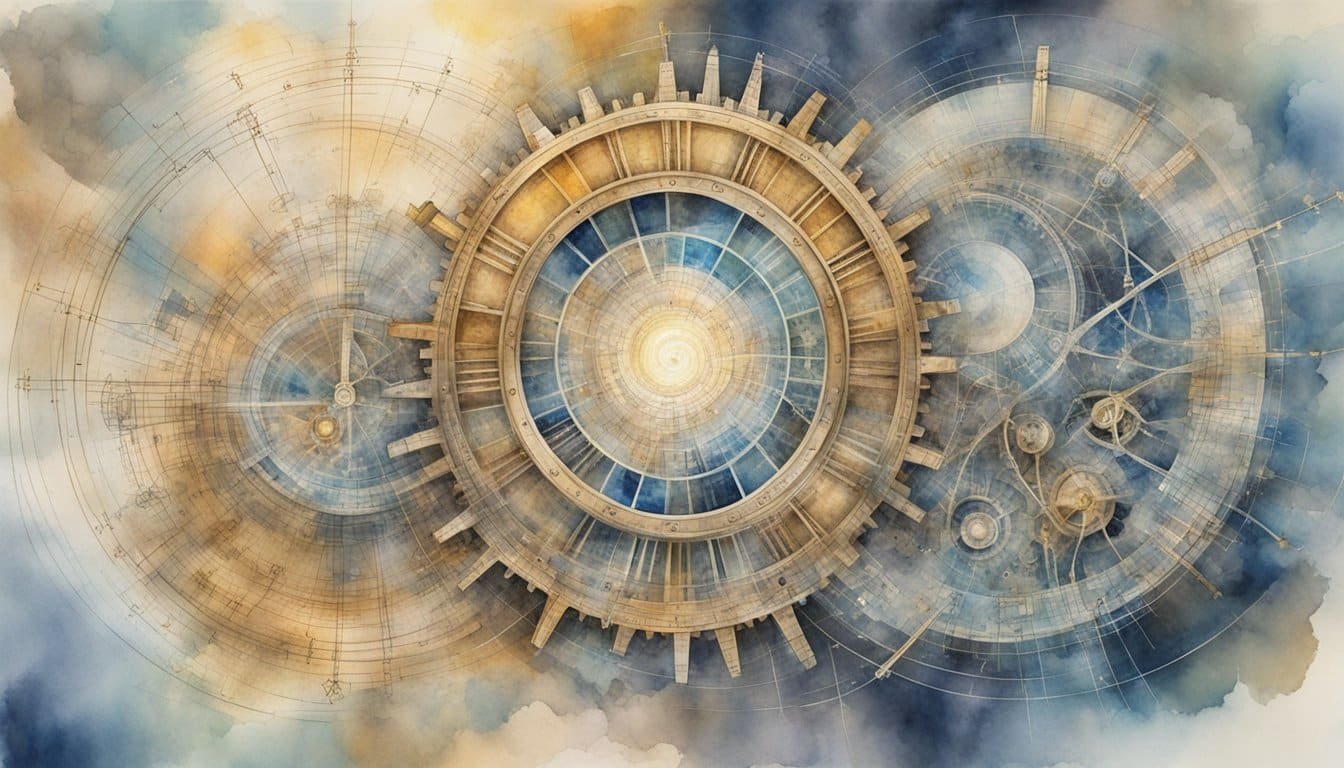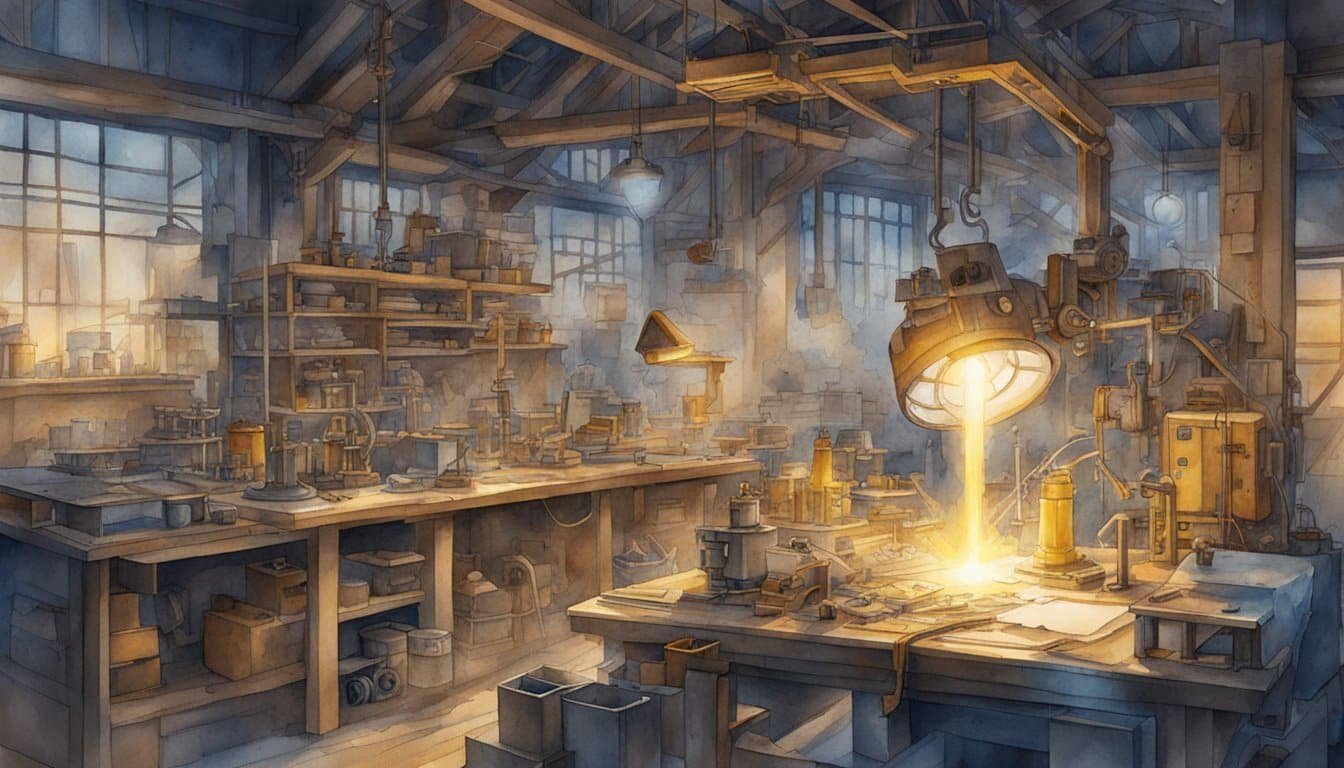Understanding Time Travel Concepts
Before one can embark on the fantastical quest to build a time machine, they have to grasp the core principles that govern the idea. Central to time travel are the complex theories of physics, the revolutionary insights of Einstein on relativity and time dilation, and the speculative roles black holes and wormholes may play in making time travel a reality.
The Physics of Time Travel
Time travel tantalizes the imagination, weaving its way through many a science fiction tale. However, in the realm of physics, it’s a topic taken quite seriously. Physicists examine the universe’s structure and laws to find if time travel could one day transcend the pages of novels. The consensus is not unified, but the discussion revolves around spacetime, with concepts like the speed of light and the influence of gravity on time being pivotal. Einstein’s general theory of relativity suggests that time is not a constant, but rather a variable woven into the fabric of the universe, influenced by mass and velocity.
Einstein, Relativity, and Time Dilation
Albert Einstein’s name is synonymous with modern physics, particularly his work on the general theory of relativity, which has had profound implications for time travel concepts. This theory posits that time, rather than progressing at a static rate, is affected by speed and gravity. Known as time dilation, this phenomenon has been observed with clocks on satellites that tick slightly slower than those on Earth. Einstein’s relativity opens the door for the possibility of time travel, especially when objects approach the massive gravitational pull of cosmic objects or move at speeds that flirt with that of light.
The Role of Black Holes and Wormholes
Black holes, massive points in space where gravity crushes all matter into an infinitely dense point, exert a pull so strong that not even light can escape. Their edges, the event horizons, mark the point of no return. But these cosmic behemoths offer more than just dire fates; they could essentially be gateways, according to some theoretical physics, for bending space and time. Similarly, wormholes—hypothesized tunnels connecting distant points in spacetime—are central to many time travel theories. While a stable wormhole would require exotic matter with negative energy to prevent it from collapsing, they remain a tantalizing concept that could potentially allow for instantaneous travel across vast distances, and possibly time.
Building a Time Machine

While the idea of a time machine captivates the imagination, bringing one to fruition involves complex theoretical models, a mastery over energy and matter, and has been a staple in pop culture with varying depictions.
Theoretical Designs and Models
The concept of a time machine often hinges on the understanding of time as a fourth dimension which can be navigated just like physical space. Prominent physicists such as H.G. Wells in his science fiction and J. Richard Gott from the California Institute of Technology have pondered on scenarios where time travel could be a possibility. This involves intricate theories like the rotating cylinder or Gott’s own models involving cosmic strings—hypothetical one-dimensional topological defects in the fabric of space-time.
Harnessing Energy and Matter
Building a time machine isn’t just about theoretical models; it also requires the harnessing of extraordinary amounts of energy and control over subatomic particles. Isaac Newton might have unraveled the laws of motion for a rocket ship, but a time vehicle would demand an understanding of physics beyond current human capabilities. In his book “How to Build a Time Machine,” Paul Davies discusses the potential unification moment when time travel might become feasible, through manipulating energy and matter in ways we are yet to comprehend.
Time Machine Blueprints in Pop Culture
Pop culture has been instrumental in shaping the image of the time machine, from the Victorian elegance of H.G. Wells’ device to the modified DeLorean in “Back to the Future” where Marty McFly journeys through time. These depictions often ignore the vast complexities of actual physics, yet they have played a role in inspiring futurists and scientists to ponder the intricacies of time travel. Films like “About Time” add another layer, examining personal and emotional effects of time travel on a human being and the observer experience.
()(https://books.google.com/books?hl=en&lr=&id=c8i5-QbqwrMC&oi=fnd&pg=PT9&dq=Building+a+Time+Machine+how+to+build+a+time+machine+&ots=6iMobigkO0&sig=N92ngLC-hWO9JS3lmIutimtK-yI)
()(https://www.cambridge.org/core/journals/behavioral-and-brain-sciences/article/evolution-of-foresight-what-is-mental-time-travel-and-is-it-unique-to-humans/85E9D236BCAE38AF71442FA31E4F2E3B)
()(https://journals.aps.org/prl/abstract/10.1103/PhysRevLett.68.263)
()(https://books.google.com/books?hl=en&lr=&id=ANMQCdQT_OAC&oi=fnd&pg=PP10&dq=Building+a+Time+Machine+how+to+build+a+time+machine+&ots=XYrUpam5iI&sig=gZct4tvB33EfxmV-v8Wr-gDiswo)
(*)(https://discovery.ucl.ac.uk/id/eprint/1492978/)
Temporal Paradoxes and Ethical Considerations

When one imagines constructing a time machine, it’s not just the technological hurdles that need addressing but also the mind-bending temporal paradoxes and the profound ethical considerations that come with the ability to traverse history.
Possible Paradoxes of Time Travel
One fascinating conundrum that time travel presents is the grandfather paradox, where a traveler could potentially alter the course of history in such a way that they prevent their own existence. There’s also the bootstrap paradox, illustrated by objects or information that appear to have no point of origin, existing without being created. Scientific discussions sometimes refer to more sophisticated concepts, such as the Tipler cylinder, a theoretical construct that some believe could enable time travel through the warping of spacetime around a massive, infinitely long cylinder. While no realistic Tipler cylinder has been discovered, it’s a tantalizing idea that often crops up in secrets of the universe types of discussions among enthusiasts.
The Impact on History and Society
Time travel isn’t just a scientific challenge; it carries a weighty ethical burden. The possibility of changing history presents a moral minefield. Should events be altered, and if so, to what end? The idea of having a record of absolute historical truth comes under threat as well. Time dilation is another phenomenon linked to time travel; it’s been scientifically observed and occurs when particles travel at high velocities, as predicted by the theory of relativity. However, the societal impact of time dilation as experienced by space travelers, featured in Scientific American, pales compared to the societal upheaval time travel could cause. It raises questions about accountability and the value of experience if any moment can be revisited and potentially altered.

